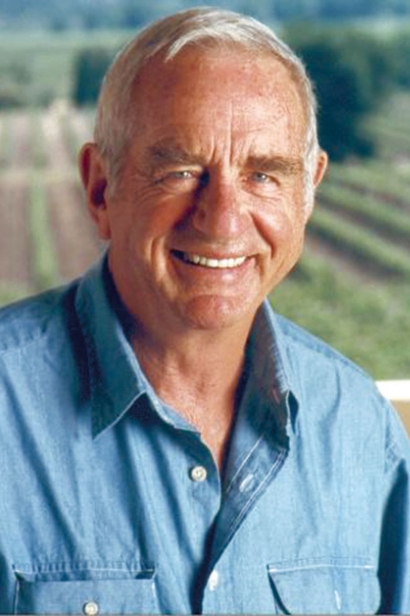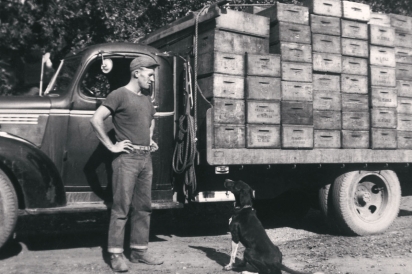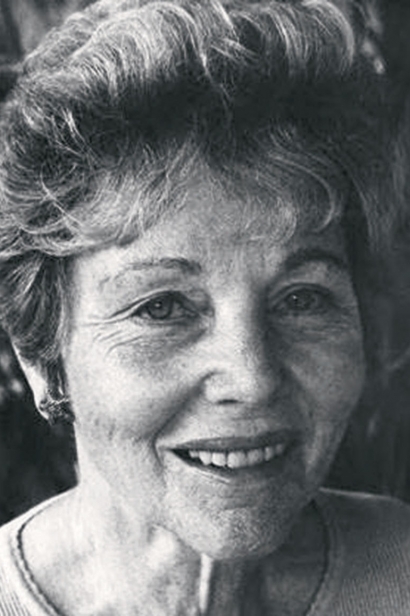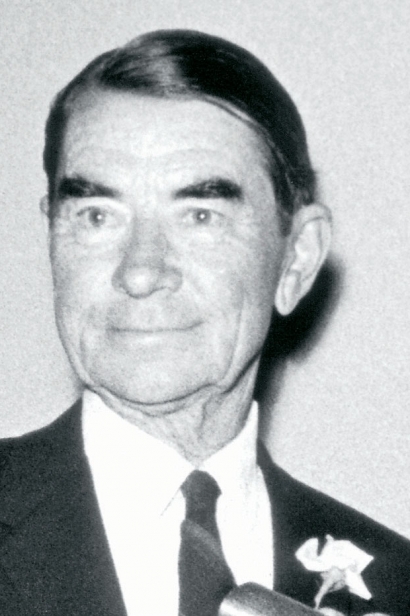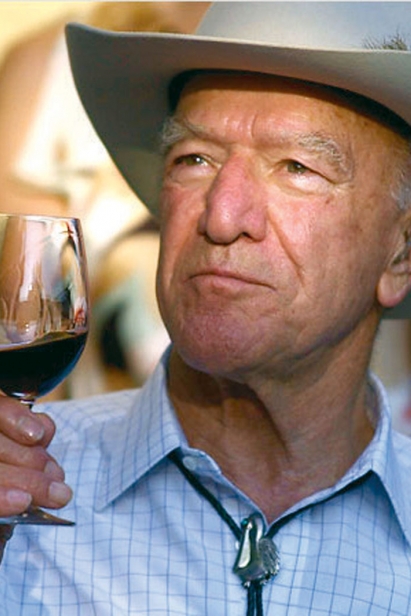In Memoriam...To Our Napa Valley Pioneers
750 Wines and Edible Marin & Wine Country salute these local wine heroes who have passed on
Most great chefs can tell you the “aha” meal that led them to the decision to learn to cook. Musicians can tell you which artists and songs moved them in ways that no others did. Ask any winemaker and they will likely talk your ear off about a specific person, wine or vintage that lifted the veil and sent them on their journey into the wonderful world of wine.
In any business there are pioneers, those who came before and laid the foundation upon which others built. In this issue we pay tribute to some of the pioneers of the winemaking world of the Napa Valley who are no longer with us.
A couple of them are household names, and after reading about the many contributions of the others we know you will understand why they deserve to be, as well.
Jim Barrett, vintner, Chateau Montelena | 1926–2013
Jim Barrett, a Los Angeles lawyer turned vintner, is certainly best known for his 1973 Chateau Montelena Chardonnay, which, along with the 1973 Stag’s Leap Cabernet Sauvignon, won the “1976 Judgment of Paris,” helping to propel the Napa Valley into a world-renowned winegrowing region.
Typical of Jim was his understated wit. After winning the game-changing Paris tasting he famously quipped, “Not bad for kids from the sticks.”
Jim was president of Napa Valley Vintners during the association’s beginnings, as well as director of Family Winemakers of California in the early 1990s. He also worked tirelessly on land conservation in the Napa Valley.
In 1982, Jim turned over winemaking duties to his son, Bo, but he remained active in Chateau Montelena right up until his death. Sadly, we lost Jim in March of this year.
Frank Lawrence “Laurie” Wood, viticulturist and water witch | 1920–2011
Laurie Wood is truly a Napa Valley legend. Laurie was best known as the “water witch” (aka douser), for his ability to find sources of water while walking through a property with an outstretched Y-shaped branch.
Laurie’s family farmed in Rutherford for over a century. In the 1940s the family’s properties produced walnuts, peaches and prunes, but following Laurie’s return from World War II he believed that the Napa Valley could produce world-class wine grapes and set out to do just that.
His viticulture career included farming such classic Napa Vineyards as Martha’s Vineyard, Bella Oaks, Bosche, York Creek, Grace Family and Chabot.
Laurie was an innovator in viticultural practices and instrumental in introducing solid-set sprinkler systems for frost protection and aerial mapping of vineyards.
Later in life when he was working predominantly as a water witch, Laurie often suggested that, rather than paying him for the work, the client donate his fee to the Wood Family Memorial Scholarship Fund that supported St. Helena High School seniors in their college endeavors.
According to local legend, Laurie’s mother gave him two pieces of advice that he lived by: “Keep a positive attitude, as we have a choice every day regarding the attitude we embrace,” and “Never take more than you give.”
No wonder he was so beloved.
Jamie Davies, vintner, Schramsberg Vineyards | 1934–2008
Jamie Davies and her husband, Jack, moved to the Napa Valley from Beverly Hills in 1965 to make sparkling wine in the traditional French method. This bold venture was previously unheard of in the United States. They purchased a historic Diamond Mountain property and restored the house and caves built by Jacob Schram a century earlier.
Using grapes purchased with the advice of Andrè Tchelistcheff, their 1965 Schramsberg Blanc de Blancs was the first commercial use of Chardonnay grapes to make sparkling wine in the United States. In 1972, President Richard Nixon took Schramberg’s 1969 Blanc de Blancs to China, where he and Chinese Premier Chou Enlai shared the famous Toast of Peace. This marked the first time that an American wine was served at such an event in the White House or overseas.
Schramsberg wines earned numerous awards over the years. In 1995, Schramsberg was awarded a lifetime achievement award by the International Festival of Méthode Champenoise and in 1996 the James Beard Foundation awarded Schramsberg the Wine and Spirits Professional Award.
Schramsberg was truly a family operation with Jack and Jamie at the helm. Jack passed in 1998, leaving Jamie to oversee the business operations. When Jamie died in 2008, their son, Hugh, who had already been instrumental in many aspects of the winery, took over as head of the company.
André Tchelistcheff, winemaker | 1901–1994
It would not be a stretch to say that André Tchelistcheff may well be the single most influential winemaker to date in the history of the Napa Valley wine industry. Born in Russia, his family fled that country during the Bolshevik Revolution. He attended the University of Brno in Czechoslovakia, where he studied agronomy. In 1930 he moved to Paris, where he studied winemaking and later worked at Moet & Chandon in Champagne. While studying in Paris, he was introduced to Georges de Latour from the United States, who was searching for a trained winemaker. In 1938 he made his way to the United States to work for Latour, serving as winemaker at Latour’s Beaulieu Vineyard (BV) from 1938 to 1973—that’s 35 years!
In researching almost any notable Napa Valley figure, you will find that they were very likely influenced in some way by this man. André counseled John Daniels at Inglenook to get rid of the Pinot Noir planted in his Rutherford Vineyard and plant Cabernet Sauvignon instead; the early Inglenook wines are to this day heralded as possibly the best wines ever produced in the Napa Valley. He also advised Jack and Jamie Davies, who intended to plant Chardonnay and Pinot Noir on their newly acquired Calistoga property for their sparkling wines, to instead plant Cabernet Sauvignon and trade their Cabernet grapes for Chardonnay and Pinot Noir from the Carneros region, which has a more conducive climate for these varieties.
After leaving BV, André served as consulting winemaker at numerous wineries including Neibaum Coppola, Buena Vista, Stags’ Leap Wine Cellars and, later, again at BV. While at BV he mentored such other legendary winemakers as Joe Heitz, Mike Grgich and Dr. Richard Peterson.
There are numerous stories of André helping other winemakers, vintners and vineyard managers throughout his life. He was known to lend a hand to anyone who requested help, even if it was in the midst of his own crush.
And all with great modesty. Even when he was credited with the great success of BV’s flagship, Georges de Latour, Private Reserve, Cabernet Sauvignon, he shrugged it off, saying, “I did not create it; Mr. de Latour did.”
Robert Mondavi, vintner, ombudsman, California Wine Ambassador to the World | 1913–2008
Last, but certainly not the least, is the legendary Robert Mondavi. There is no question that Robert was the most influential ambassador for not only his own wines, or Napa Valley wines, but for all California wines, both here in the United States and internationally. If you ask many in the Valley why they are here, you would be hard pressed not to hear Robert’s name as part of their answer. He was certainly a huge influence in our own choices to be part of the Napa Valley wine community.
Robert’s father, Cesare, and mother, Rosa, came to the United States from Marche, Italy, to find work in the Minnesota iron mines. Wine being a staple on the Italian dinner table, Cesare produced wine for home consumption during Prohibition.
After the Mondavi family moved to Lodi, California, to get into the grape business, Robert heard about a winery for sale in the Napa Valley and persuaded his father to have a look at it. Cesare eventually purchased the Charles Krug winery, where his children Robert, Peter, Mary and Helen grew up.
Robert attended Stanford University, studying business. When he returned to the Napa Valley, his father suggested that there would be a future in the wine industry, so why not go into a young industry and grow with it? This is exactly what Robert did. In 1966, after a family disagreement, Robert left the family business and started his own winery, which became the legendary Robert Mondavi Winery. This was the first new commercial winery in the Valley since the 1930s.
Robert was instrumental in introducing many innovations to the wine industry, from fermenting in stainless steel, which up until then was unheard of, to new marketing strategies such as naming his barrel-fermented Sauvignon Blanc “Fume Blanc,” which soon became very popular and was thought by many consumers to be a new varietal, though it was not.
Robert Mondavi Winery was truly a family operation with his son Tim as winemaker, son Michael concentrating on sales and daughter Marcia serving on the board of directors. Robert and his second wife, Margrit Biever, traveled extensively, marketing Mondavi Family Wines and promoting the idea of wine as a staple at the table. Robert sought to persuade every American that table wine was an integral part of daily life, not an occasional extra. He not only touted the fact that California could produce great “contest-winning” wines, but that wine was something to be enjoyed and shared with friends and family.
Robert’s extensive philanthropy is also legendary. Among his many donations was $35 million to the University of California at Davis to establish the Mondavi Institute for Wine and Food Science and to finish the campus’s performing arts center.
Robert’s joie de vivre is missed every day in the Valley.
These are just a handful of the many Napa Valley pioneers whose labors, visions, personalities and bravery were, are and always will be inspirations to those of us fortunate enough to live and work in this very special place, following in the footsteps of giants and learning from their guidance.
The authors would like to acknowledge the following for their help with the information in this article:
Sue Wood Clark and Sally Wood, children of Laurie Wood; Napa Valley Wine Library; St. Helena Historic Society; NAPA: The Story of An American Eden by James Conaway (reprint by Mariner Books, 2002); and The Wine Institute of California


